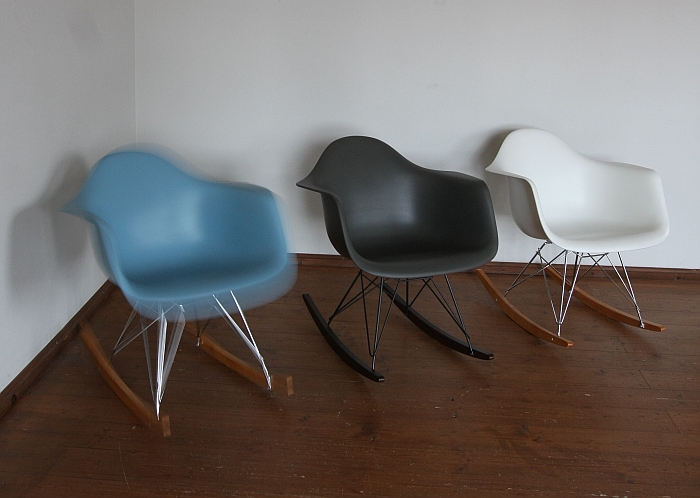Charles Eames is arguably the best known representative of post-war American design. His works are certainly the most commonly recognized and endearing examples of post-war American design. Yet exactly because of the success of his post-war work it is often forgotten that Charles Eames has a pre-war biography, a biography that is pre-Ray Kaiser, pre-George Nelson, pre-Hermann Miller, pre-Vitra, pre-plywood, plastic and aluminium, pre-IBM, Moscow, India, Mathematica, Franklin & Jefferson.... and for all pre-international success.
But no less interesting.
Born on June 17th 1907 in St Louis, Missouri as the second child to Charles Ormond Eames and Marie Adele Celine Lambert, Charles Ormond Eames Jr largely spent his formative years in St Louis and in 1925 enrolled to study architecture at the city's Washington University.
Although by all accounts, and there sadly not that many truly independent accounts, Charles Eames was an intelligent, articulate and artistically talented student he spent just four semesters at Washington before in 1927 he was asked to leave, because, as his daughter Lucia remembers, he became "prematurely interested and concerned with Frank Lloyd Wright." No great admirer of the classic, Beaux-Arts taught at Washington University Eames, so the accepted story, queried why modern thinkers such as Lloyd Wright weren't on the curriculum. And did so a little too loudly and little too often for the university's liking.
In 1929 the still only 22 year old Eames received his first direct exposure to both international modernism and classical architecture on a honeymoon trip to Europe with his new wife Catherine Dewey Woermann. In addition to visiting many of the great cities in Italy including Rome and Siena, the Eames' also spent time in Germany where they saw works by the likes of Walter Gropius, Mies van der Rohe, Le Corbusier, Henry van der Velde et al. When the young pair returned to St. Louis in 1930 it was to depression era America, and with no prospects of work Charles Eames founded his own architectural practice with two acquaintances, Charles Gray and Walter Pauley. Although the firm was not unsuccessful, the small commissions Eames, Gray & Pauley were able to win were not the foundations on which dreams are built and by 1933 with no sign of an upturn and ever increasing numbers of Americans turning to suicide or drink Charles Eames decided to take a dramatic step of his own, and having deposited his wife and daughter with the in-laws he set off to Mexico "with just 75 cents in his pocket, promising to return, but not knowing or saying exactly when"
That return came in 1934 following around nine months spent travelling extensively in Mexico, bartering for food and accommodation, getting arrested, getting to know the people and culture, painting watercolours of the land and people he encountered, but for all discovering himself.
Less a Damascus moment as a Monterrey moment.
Upon his return Charles Eames established an architectural practice with Robert Walsh, a practice which completed a handful of commissions including several private houses and two churches: St. Mary’s in Paragould, Arkansas and St. Mary’s in Helena, Arkansas, the latter of the two being especially important. On the one hand Charles Eames designed many of the fixtures and fittings including the pews, objects which Eames Demetrios argues could have been Charles Eames' first experience with large scale furniture production, but more importantly St. Mary’s Helena was published in the January 1935 edition of Architectural Forum, the first mention of Charles Eames in an architecture publication. Despite our best efforts we have been unable to track down a copy of that particular edition of Architectural Forum and so are unable to confirm what the author wrote or the photographer highlighted, that however is unimportant, what is important is that the feature attracted the attention of Eliel Saarinen: one of the leading and most highly regarded architects of his day, father of Eero Saarinen, and President of the renowned Cranbrook Academy of Art, the number one address for young American creatives of the age, and those who aspired to become such.
Having read about St. Mary’s Helena Saarinen contacted Eames and Walsh to learn more about the project, an initial contact which led to numerous meetings between Saarinen and Eames, meetings which led the pair to develop a strong friendship and mutual respect and which ultimately led to Eliel Saarinen inviting Charles Eames to come to Cranbrook, an offer Eames accepted in January 1938. Thus it came that in September 1938, having completed the so-called Meyer House in Huntleigh, Missouri, Charles Eames moved to Cranbrook to become a fellow in the school's Architecture and Public Planning programme. The rest, as they say.....
Happy Birthday Charles Eames!
